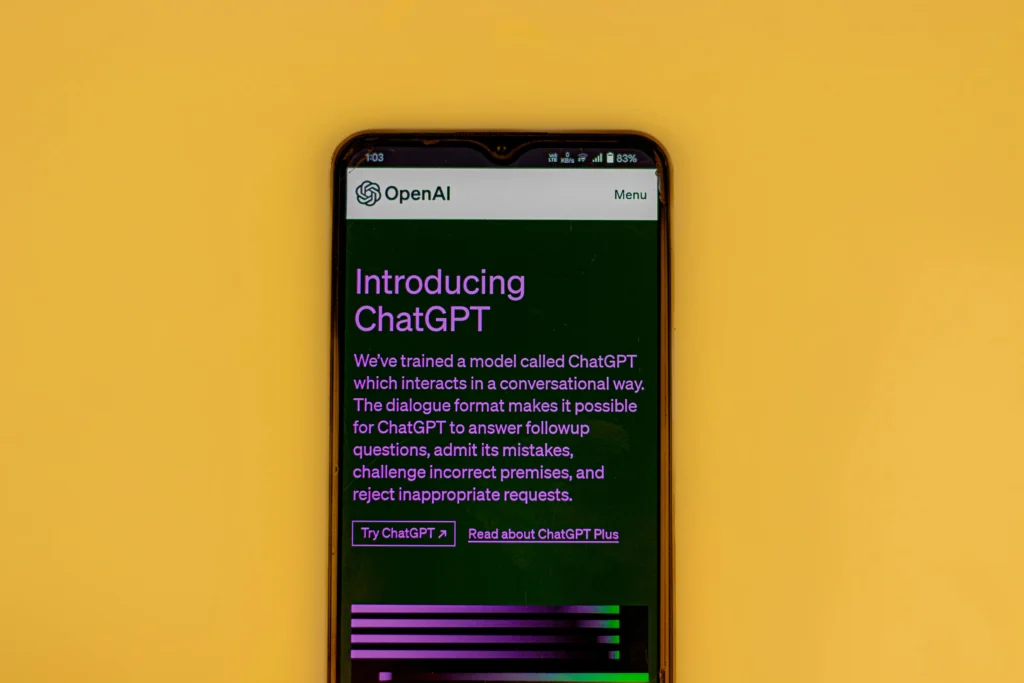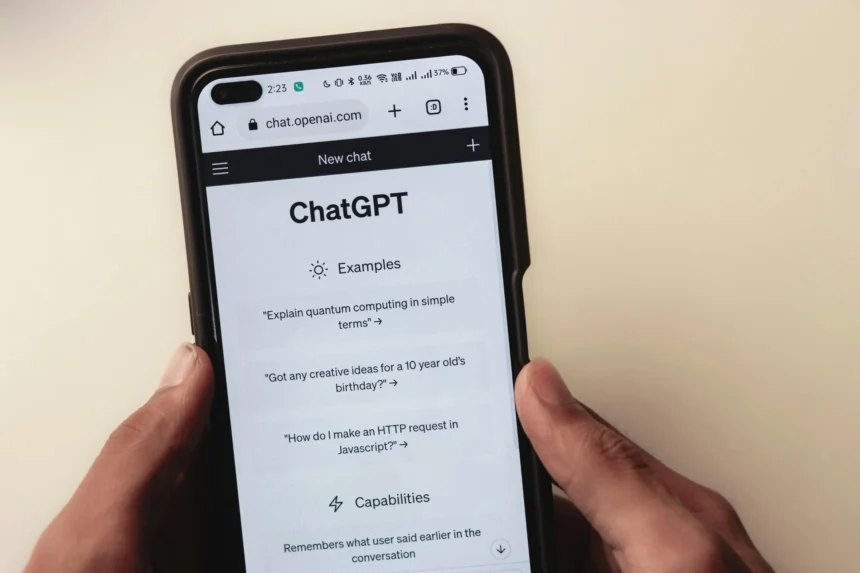In the rapidly evolving world of artificial intelligence, few innovations have captured public attention quite like ChatGPT. Since its launch in November 2022, this groundbreaking AI chatbot has transformed how millions of people interact with technology, work, learn, and create. But what exactly is ChatGPT, and why has it become such a phenomenon? This comprehensive guide will explore everything you need to know about ChatGPT, from its technical foundations to its practical applications and future implications.
What is ChatGPT?
ChatGPT, which stands for “Chat Generative Pre-trained Transformer,” is an advanced artificial intelligence chatbot developed by OpenAI. It represents a significant leap forward in conversational AI technology, capable of understanding and generating human-like text responses across an incredibly wide range of topics and tasks.
At its core, ChatGPT is a large language model (LLM) that has been trained on vast amounts of text data from the internet, books, articles, and other sources. This training enables it to understand context, maintain coherent conversations, and provide detailed, relevant responses to user queries. Unlike traditional chatbots that rely on pre-programmed responses, ChatGPT generates original content in real-time based on its understanding of language patterns and the specific context of each conversation.
The Technology Behind ChatGPT

Transformer Architecture
ChatGPT is built on the transformer architecture, a neural network design that revolutionized natural language processing. Transformers excel at understanding relationships between words in a sentence, regardless of their position, through a mechanism called “attention.” This allows ChatGPT to grasp context and nuance in ways that previous AI models couldn’t achieve.
Pre-training and Fine-tuning
The development of ChatGPT involves two main phases:
Pre-training: The model is initially trained on a massive dataset containing diverse text from the internet, learning to predict the next word in a sequence. This process helps the model develop a broad understanding of language, facts, reasoning abilities, and even some level of common sense.
Fine-tuning: After pre-training, the model undergoes additional training using human feedback (RLHF – Reinforcement Learning from Human Feedback). Human trainers provide examples of desired behavior, and the model learns to align its responses with human preferences for helpfulness, accuracy, and safety.
GPT Model Versions
ChatGPT has evolved through several iterations:
- GPT-3.5: The initial version that powered the original ChatGPT launch
- GPT-4: A more advanced version with improved reasoning, creativity, and accuracy
- GPT-4 Turbo: An optimized version with enhanced performance and efficiency
- GPT-4o: The latest iteration with multimodal capabilities
Key Features and Capabilities

Natural Language Understanding
ChatGPT excels at understanding natural language in all its complexity. It can interpret context, recognize implied meanings, understand idioms and metaphors, and respond appropriately to various communication styles. This makes interactions feel remarkably human-like and intuitive.
Versatile Content Generation
The AI can generate various types of content, including:
- Creative Writing: Stories, poems, scripts, and fictional narratives
- Technical Content: Code, documentation, and technical explanations
- Educational Materials: Lesson plans, study guides, and explanations of complex concepts
- Business Content: Emails, reports, marketing copy, and professional correspondence
- Analytical Content: Data analysis, research summaries, and critical evaluations
Multi-turn Conversations
Unlike simple query-response systems, ChatGPT maintains context throughout extended conversations. It remembers previous exchanges within a session, allowing for more natural, flowing discussions that can evolve and deepen over time.
Code Generation and Programming Help
ChatGPT has proven particularly valuable for programmers and developers. It can:
- Write code in multiple programming languages
- Debug existing code
- Explain programming concepts
- Suggest optimizations and best practices
- Help with software architecture decisions
How to Use ChatGPT
Accessing ChatGPT
Users can access ChatGPT through several methods:
Web Interface: The most common way is through OpenAI’s website, where users can interact with ChatGPT directly through a web browser.
Mobile Applications: Official ChatGPT apps are available for both iOS and Android devices.
API Integration: Developers can integrate ChatGPT’s capabilities into their own applications using OpenAI’s API.
Best Practices for Effective Use
To get the most out of ChatGPT, consider these strategies:
Be Specific: Clear, detailed prompts typically yield better results than vague requests.
Provide Context: Include relevant background information to help ChatGPT understand your needs.
Iterate and Refine: Don’t hesitate to ask follow-up questions or request modifications to responses.
Fact-Check Important Information: While ChatGPT is knowledgeable, it’s important to verify critical information from authoritative sources.
Applications Across Industries
Education and Learning
ChatGPT has become a valuable educational tool, helping students and educators in various ways:
- Personalized tutoring and explanation of complex concepts
- Assignment assistance and research support
- Language learning practice and conversation
- Creating educational materials and lesson plans
Business and Professional Use
Organizations across industries are leveraging ChatGPT for:
- Customer service automation
- Content marketing and copywriting
- Data analysis and reporting
- Process documentation and training materials
- Strategic planning and brainstorming
Healthcare and Research
While not a replacement for professional medical advice, ChatGPT assists healthcare professionals and researchers by:
- Analyzing medical literature
- Generating research summaries
- Creating patient education materials
- Supporting medical writing and documentation
Creative Industries
Artists, writers, and creators use ChatGPT for:
- Brainstorming and idea generation
- Content creation and editing
- Script and story development
- Marketing and promotional content
Limitations and Considerations
Knowledge Cutoff
ChatGPT’s training data has a specific cutoff date, meaning it may not have information about very recent events. Users should be aware of these temporal limitations when seeking current information.
Potential for Errors
While highly capable, ChatGPT can sometimes generate incorrect information, make logical errors, or produce biased responses. Critical thinking and verification remain essential when using its outputs.
Lack of Real-time Internet Access
Standard versions of ChatGPT don’t browse the internet in real-time, limiting their ability to provide current information or access live data sources.
Ethical Considerations
The use of ChatGPT raises important questions about:
- Academic integrity and plagiarism
- Job displacement and workforce changes
- Privacy and data security
- The potential for misuse in creating misleading content
The Impact of ChatGPT on Society
Democratizing Access to AI
ChatGPT has made advanced AI capabilities accessible to millions of people without requiring technical expertise. This democratization has accelerated AI adoption across various sectors and use cases.
Transforming Work and Productivity
Many professionals report significant productivity gains when using ChatGPT for tasks like writing, research, coding, and analysis. However, this has also sparked discussions about the future of work and the need for workforce adaptation.
Educational Revolution
ChatGPT is reshaping education by providing personalized learning experiences, instant access to information, and new ways of engaging with educational content. However, it has also raised concerns about academic integrity and the need for new assessment methods.
Economic Implications
The widespread adoption of ChatGPT and similar technologies is creating new economic opportunities while potentially disrupting existing industries and job markets.
Future Developments and Trends
Multimodal Capabilities
Future versions of ChatGPT are expected to handle multiple types of input and output, including images, audio, and video, creating more versatile and comprehensive AI assistants.
Improved Accuracy and Reliability
Ongoing research focuses on reducing errors, improving factual accuracy, and making AI responses more reliable and trustworthy.
Specialized Applications
We can expect to see more industry-specific versions of ChatGPT tailored for particular use cases, such as medical diagnosis support, legal research, or financial analysis.
Integration with Other Technologies
ChatGPT’s capabilities will likely be integrated with other emerging technologies like augmented reality, Internet of Things devices, and advanced robotics.
Getting Started with ChatGPT
Free vs. Paid Versions
OpenAI offers both free and paid tiers of ChatGPT access:
Free Tier: Provides access to basic ChatGPT functionality with some usage limitations.
ChatGPT Plus: A subscription service offering priority access, faster response times, and access to the latest model versions.
Tips for New Users
For those new to ChatGPT:
- Start with simple, clear questions to understand how the system responds
- Experiment with different types of prompts and requests
- Learn from the community by exploring shared examples and use cases
- Stay updated on new features and capabilities as they’re released
Conclusion
ChatGPT represents a watershed moment in artificial intelligence, bringing sophisticated language understanding and generation capabilities to mainstream users. Its impact extends far beyond technology, influencing education, business, creativity, and society as a whole. While it’s not without limitations and challenges, ChatGPT has demonstrated the transformative potential of AI and set the stage for even more advanced developments in the future.
As we continue to explore and integrate this technology into our daily lives, it’s crucial to approach it with both enthusiasm and responsibility. By understanding what ChatGPT is, how it works, and how to use it effectively, we can harness its power to enhance our productivity, creativity, and learning while remaining mindful of its limitations and ethical implications.
The journey of ChatGPT is just beginning, and its evolution will undoubtedly continue to shape the landscape of human-AI interaction for years to come. Whether you’re a student, professional, creator, or simply curious about AI, ChatGPT offers a window into the future of technology and its potential to augment human capabilities in remarkable ways.








